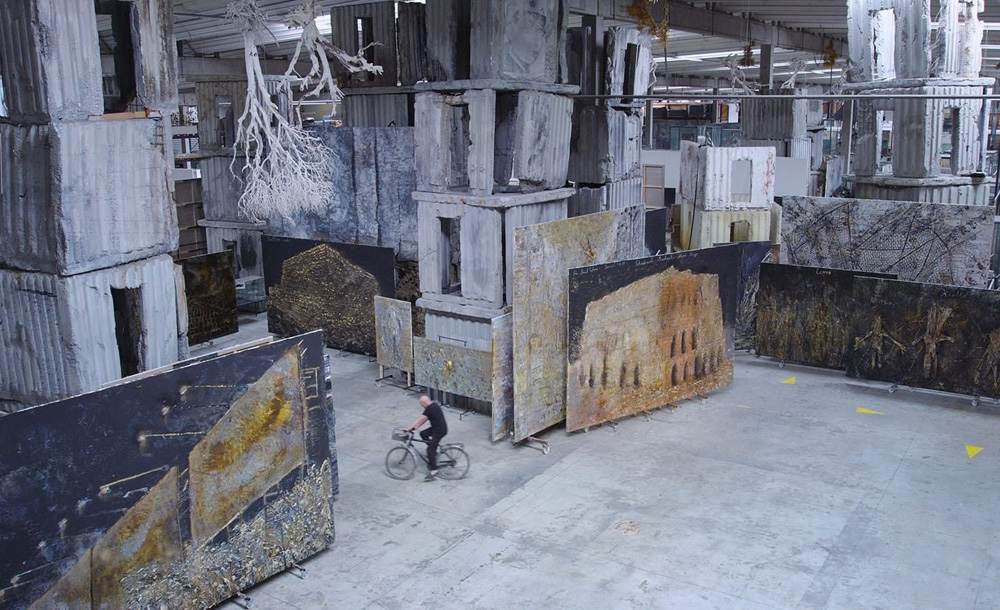At one point in “Anselm,” the German artist Anselm Kiefer can be heard talking about his 1975 project “Cauterization of the Rural District of Buchen,” a collection of books that he made in which he took some of his oil paintings and burned them, not to the point of total destruction but to replicate the texture of flesh that had been charred when the land had been the site of the Holocaust. It remains as provocative now as when he first published it, but more so in the eyes of its creator as a formal endeavor than a statement about his home country, an opinion that director Wim Wenders would seem to honor throughout his engrossing biography of the painter by being just as daring in his presentation, filming in an extraordinarily detailed 6K 3D format in which you’re pulled into what feels like a private tour of Kiefer’s 200-acre compound La Ribaute.
Of course, it isn’t the first time that Wenders has worked in the format, previously celebrating the work of dancer and choreographer Pina Bausch in all its dimension shortly after her death in the 2011 doc “Pina,” but the filmmaker employs it differently in “Anselm” when the depth of the frame illustrates just how far Kiefer’s inspiration runs. Making innovative use of the ability to superimpose imagery atop one another in such a way that all of it can be seen at the same time, Wenders can make the most sophisticated technology yield a directness that mirrors Kiefer’s art beyond speaking to his influences, needing no words to describe the artist’s birth at the tail end of World War II when Germany laid in ruins when imagining his earliest years unfolding in a pop-up book.
The artist himself is introduced playfully, riding around his studio now in the South of France on a bicycle, and Wenders stresses the notion that he has never fully left his childhood behind, with the filmmaker enlisting his great nephew Anton Wenders to imagine formative scenes from his youth. While there isn’t a sense of arrested development, there is the acknowledgement that there are some moments that never leave one’s memory and Kiefer achieved a strange notoriety, questioned for his motives in invoking Nazi tropes in his work in a country that didn’t want to be reminded while celebrated abroad as reckoning head on with the past. When Kiefer wanted the work to speak for itself, Wenders doesn’t pry and spends time with the artist without explicitly interviewing him, allowing for a ghostly voiceover of largely abstract thoughts that becomes just one layer atop all the others to look deeper into his paintings and arrive at your own conclusions.
While Kiefer’s work could be impenetrable, Wenders makes it absorbing, deftly managing a narrative that moves from the mundane to the surreal as the artist can be seen going about his routine and eventually having to search his memories for stimulation in parallel with inviting audiences to take in past work to consider its ongoing implications. Transcending both time and space, “Anselm” fulfills the potential for art to be truly transporting.
“Anselm” will be released by Sideshow Films starting December 8th.




